-first published in 2012; updated in 2019-
If you spend four minutes with my kids in October, you’ll be reminded within minutes that Halloween is around the corner. This is because they’re kids, and who wouldn’t love a holiday that involves dressing up like beloved characters and collecting candy in a bag?
Dress up plus sweets? Sign me up, they say.
Despite how I feel about the sugar-laden day, I love that it’s a fun way to get out in the community, enjoy the fall, and create family memories. I go with it.
But I’m gonna pull back the curtain behind the wizard here, and it’s one of those inconvenient truths that I wish we could ignore. But we can’t—because it’s real, it’s rampant, and not enough well-meaning families know about the reality behind their shiny-foiled wrappers.
The far majority of chocolate is in our stores because of forced child labor. And unless we tell the guilty companies that this isn’t okay, this will keep happening.
So this means that the majority of the chocolate candy in your kids’ Halloween bag will be because of child labor, and often child slavery. But this also means there’s a simple but powerful thing you can do as a family to not contribute to the epidemic issue. More on that at the end.
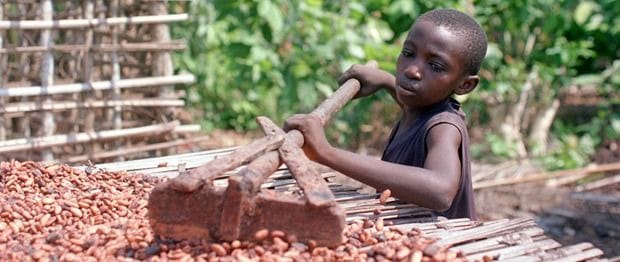
In 2001, various news sources revealed that children were being used as slaves or cheap labor in West African cocoa farms, where the majority of the world’s cocoa is birthed. Lawmakers in the U.S. tried to enact laws to require change, but the farthest they got was a voluntary protocol (the Harken-Engel Protocol, to be exact), signed by heads of major chocolate companies, to ask for the stop of child labor “as a matter of urgency.”
This pretty-please request was more or less ignored, and almost 20 years later, there are still over a million children working on cocoa farms with little more than the torn clothes on their backs. Their hands and faces are often sliced with machete scars, evidence of the main tool they use to cut down the cocoa from trees after shimmying up the trunk (and also used to split open the cocoa pod).
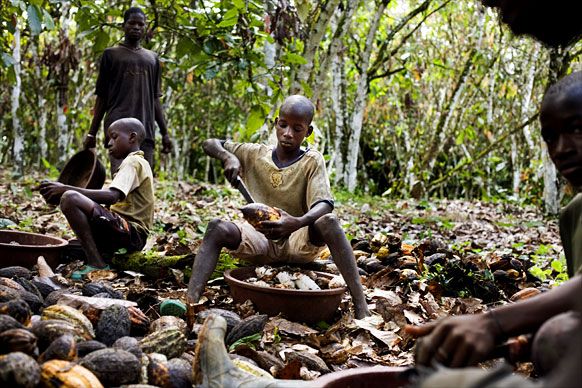
Most of the children are also required to spray hazardous chemicals on the crops, where they ingest it into their lungs, and they are unable to attend school while they work, which is in violation of the International Labor Organization (ILO). Most of these children can’t read or write, they subsist on corn paste and bananas, and have never tasted the chocolate they help produce for our own families.
According to the website Grist, a 2011 Tulane University study found a “projected total of 819,921 children in Ivory Coast and 997,357 children in Ghana worked on cocoa-related activities” in 2007-2008.
The ILO calls the cocoa industry the worst form of child labor today. And these farms, mostly in Ghana and Ivory Coast, exist because of brands like Hershey, Nestle, Mars, and Cadbury—they all purchase cocoa from these farms, are all aware of their practices, and as of today, have chosen to do little about it.
As of June 2019, it’s still reported as one, if not the worst, global child labor crises today.
What can we do?
Here’s the deal—as well-intentioned families who hold the majority of the world’s money (if you can read English and are reading this website, you’re probably in this demographic), we hold an incredible amount of power in our wallets. We simply need to put our dollars where our hearts beat and NOT BUY THIS CHOCOLATE. It doesn’t take much for us to make a massive dent in this worldwide catastrophe.
Chocolate is not an essential commodity for survival, so we can each absolutely afford brands that practice ethical standards from the crop to the store. It’s simply a matter of knowing what those are.
What’s up with the Fair Trade label?
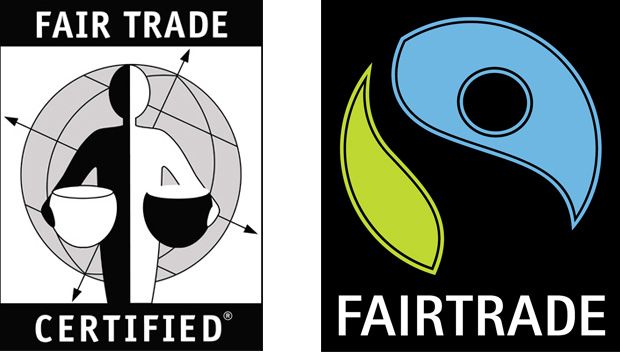
I wrote about this in my post about the coffee industry, and the same thing applies to chocolate. The “Fair Trade” label means the farmer was paid a fair price for his or her product, and in buying this chocolate, you as a consumer aren’t willingly participating in exploitation. To my understanding, a farmer will not get this label if he or she isn’t using fair practices on their employees (such as low wages, dangerous conditions, or using child slaves).
Unfortunately, a farmer has to pay for this certification, and at thousands of dollars, many can’t afford this.
Look for a short supply chain
A good option is to look for the shortest supply chain possible, which means there are few steps between the farmer and the grocery aisle. Look for verbiage like “Direct Trade” and “Bean to Bar.” These chocolatiers often travel directly to the farms, develop a relationship with the farmers, and therefore both get the top-tiered choice in beans and are given a reasonable price—which directly goes to farm operations.
Stick to the Americas and/or organic
An easy-ish thing to do is to stick to chocolate from Central and South America. Organic chocolate is almost exclusively grown in Central and South America, where slavery hasn’t been an issue. If the label is missing its location origin, ‘organic’ should hopefully mean ethically sourced and farmed. It's not 100% guaranteed, of course, but it’s a start.
To sum up: the best chocolate to look for is a brand with the certified Fair Trade label, plus verbiage like “bean to bar,” plus organic, plus originating in Central or South America.
Is that it?
Not quite. Also keep in mind that those major chocolate brands also pump their candies full of GMOs, fake emulsifiers, artificial sweeteners, and other chemicals—at least in the U.S. I can’t speak for every country, of course, but in my travels, I can attest that chocolate tastes much better outside of America. In fact, certain well-known chocolates in the U.S. must be labeled “chocolate candy” in other countries, because it’s not considered real chocolate elsewhere.

Look for the Non-GMO Project Verified label to better ensure your chocolate isn’t full of ick.
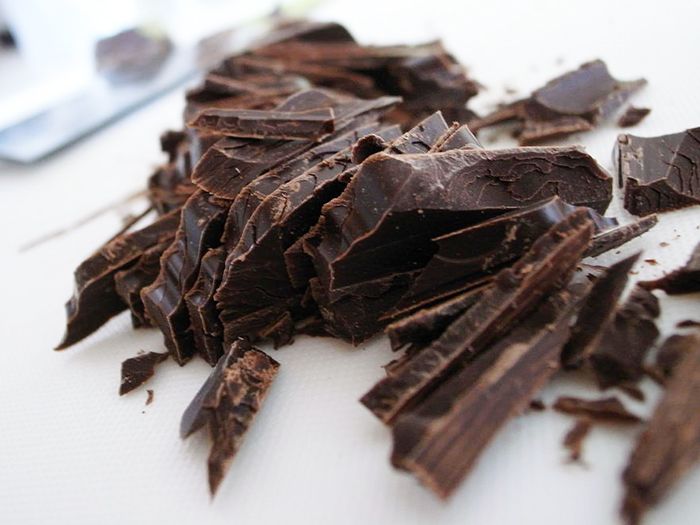
“I guess this means we should cancel trick-or-treating and eat organic apples while watching depressing documentaries, eh?”
I’m a realist, and I get that many of us still want to take our kids trick-or-treating (or really, our kids would be heartbroken to ban the holiday). Here’s what we can do.
1. Tell your kids the truth... age-appropriately.
You don’t need to go into graphic detail, but I think it’s perfectly legit to tell your kids that as a family, you can’t, in good conscience, buy mainstream chocolate because those companies use kids just like them to work really hard for almost no money, that they often get hurt, and that they can’t go to school because of chocolate.
Let’s change the status quo by motivating their generation to practice ethical buying now.
2. Don’t buy chocolate from mainstream brands.
Choose to notbuy chocolate from companies like Nestle, Hershey, Mars, and Cadbury until they get the message that we are not okay with forced child labor.
3. Buy from awesome companies.
There are more and more chocolatiers that are selling ethically-made chocolate—let’s support them. Yes, it costs more. So we buy less. It’s a small price to pay for doing right.
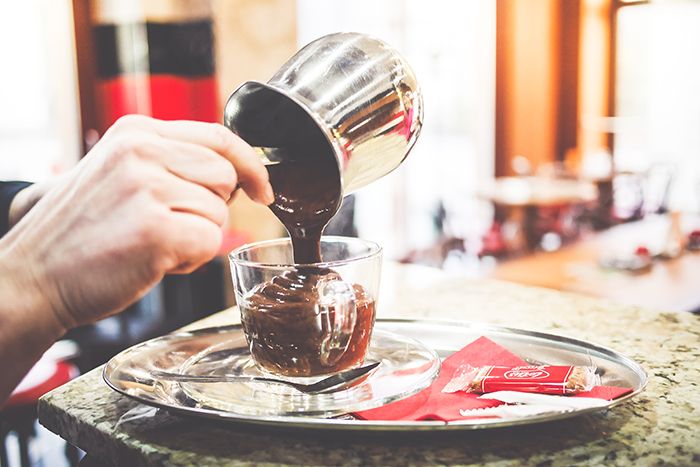
Good Halloween treats
In the past I've linked to various Halloween options, but these links become outdated so quickly that it's best if I simply link to reputable brands. Do a little research and find their bite-size Halloween offerings, because there are plenty available each year.
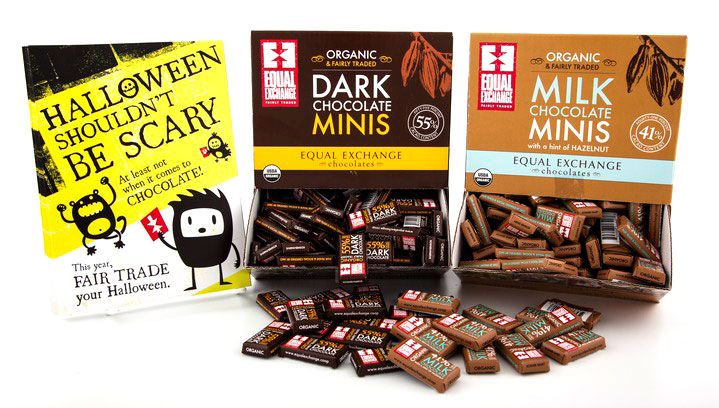
Also, chocolate doesn’t end on Halloween, of course—use these reputable chocolatiers for all your chocolate snacking, drinking, and baking needs.
Good Chocolate Companies
- AlterEco | on Amazon
- Askinosie
- Beyond Good | on Amazon
- Divine | on Amazon
- Equal Exchange | on Amazon
- Green & Blacks | on Amazon
- Taza | on Amazon
- Theo Chocolate | on Amazon
- …and Costco’s Kirkland brand chocolate chips are supposedly responsibly-sourced, but it’s still uncertain.
And finally…
You may not feel rich, but compared to the rest of the world, you probably are. Really. You can make a major difference in the world simply by directing your money to the right sources. We’re at the beginning of the chocolate-heavy holiday season—we have plenty of time to purchase well.
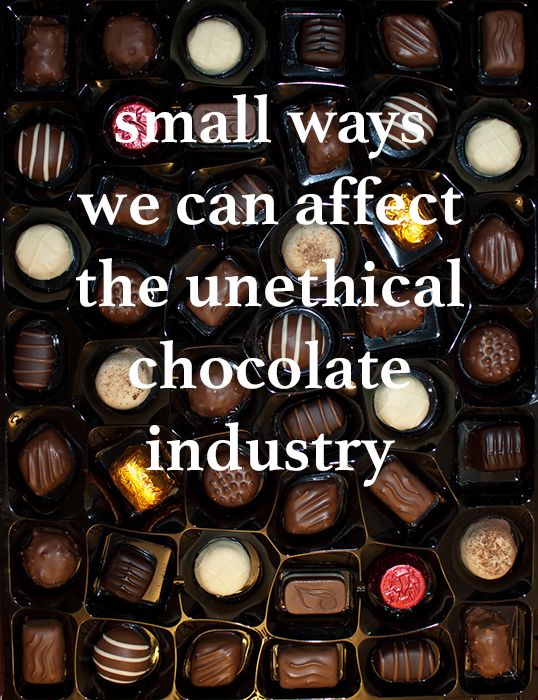
A few affiliate links are used here, which means at no extra cost to you, making a purchase by clicking these links helps support this site. Thanks!



